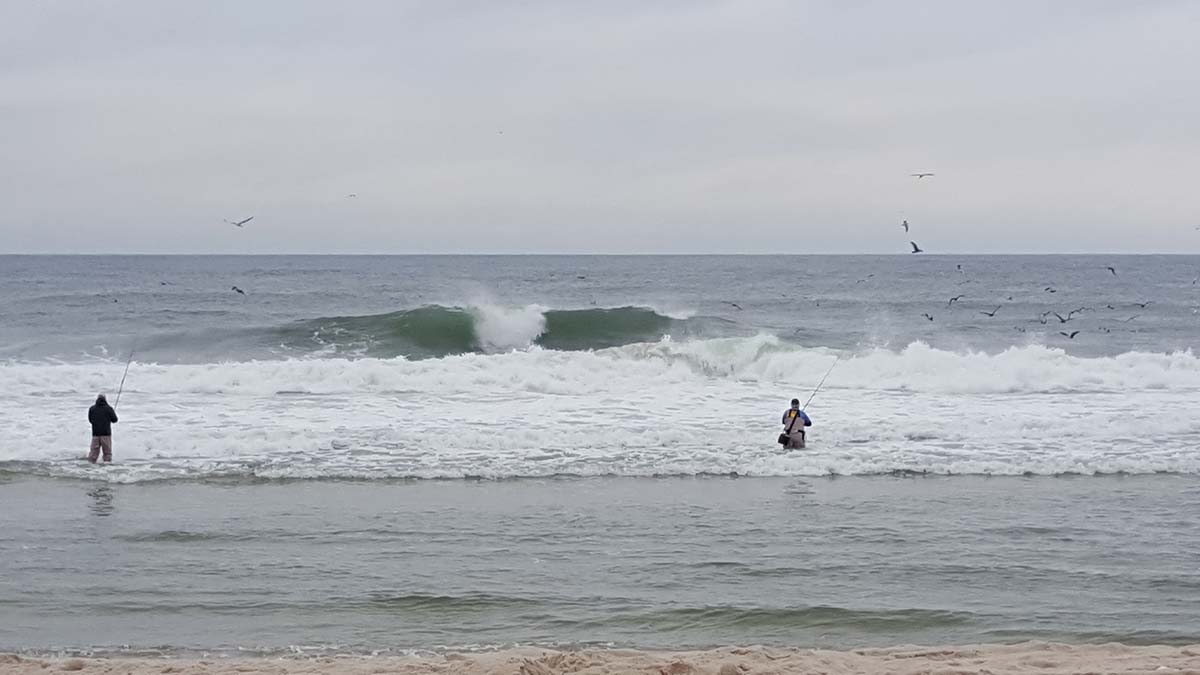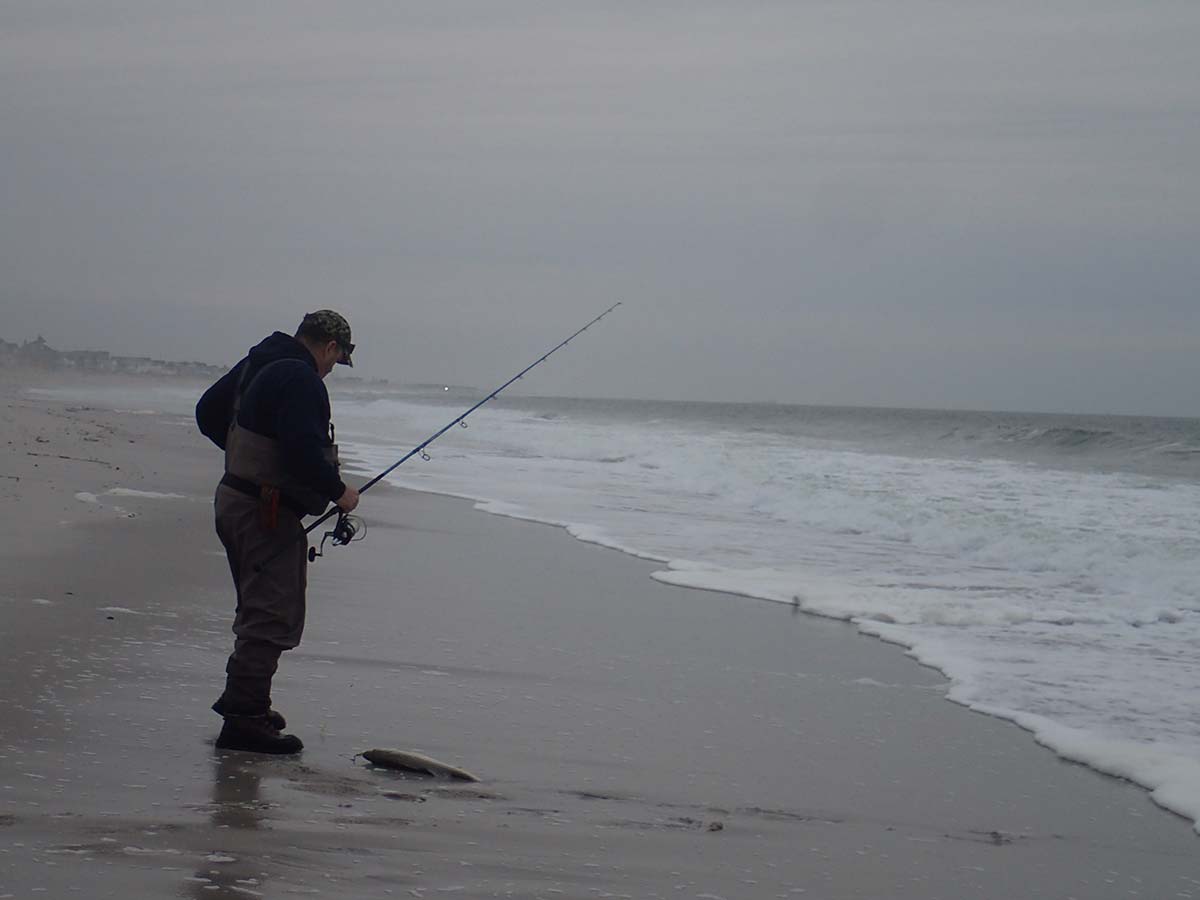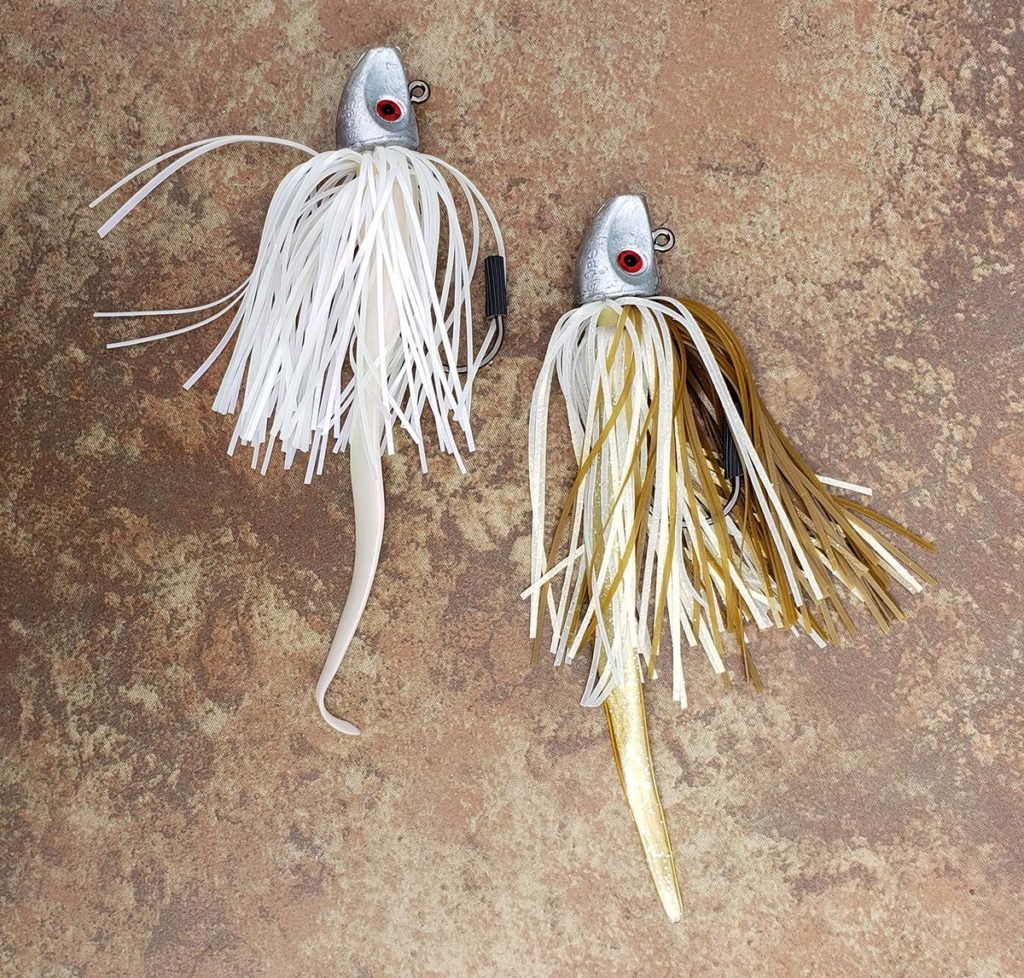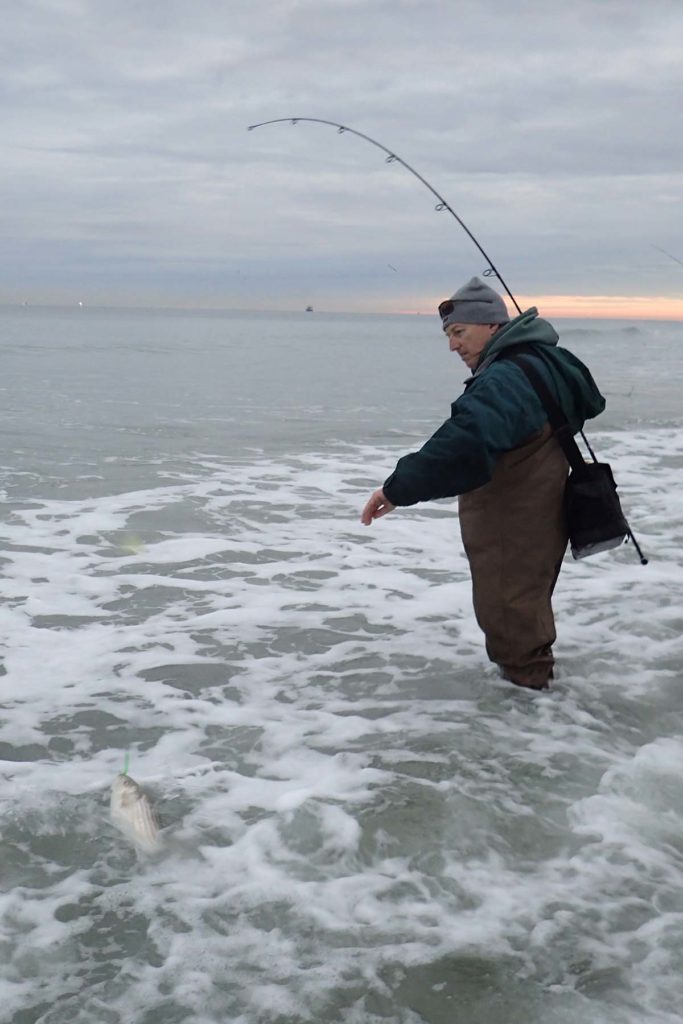Play audio file to listen to this feature.

You don’t need social media or a map to find fish, just good situational awareness.
What I refer to as The Wedge is where the endless waters of the sea meet terra firma, or more basically dry land.
Remember that there is a lot of water out there; 71% of the earth is covered by water, 96.5% of that is from the oceans. Massive currents move the water and fish. In turn, it always amazes me how that transition zone between dry land and water mixes so nicely.
You would think with that much water and current the meeting place would be violent. As water comes to the shore in the form of a swell, it will terminate along the beach and then that water will return to the sea in a less aggressive manner. When I think of the wedge I see it starting in the area where the bottom begins to get substantially shallower. Shallow can mean from 3 feet to 7-10 feet or more. Once the water or swell reaches shallow bottom things begin to happen and these things are good for surfcasters and the predators that we try to catch.
Once water moves into the wedge things begin to get interesting. Baitfish are comfortable in open water; it is here where they can school up tightly for protection. You do not have to look far in nature to see that beasts are safer when in a group. As a predator attacks a group there are too many moving parts or options and this takes away from the single focus needed to home in on one target.
Predators on the other hand want compression, things packed into a small confined place, with no place for escape. Predators also love pulling currents of the wedge as well as the rough and turbid waters and use it to their advantage. The wedge is violent; you have sandbars, jetties, depressions (the trough) all adding to the character of this piece of good water, the wedge.

Structured Analysis
When looking out upon a productive piece of water, first you may have an outer bar, which in some places it can be 30 to 40 yards off the beach, and in other places it can be 100 yards or more off the beach. The outside of the outer bar is one of the most under-mentioned fish holds. It could well be because it is the furthest from the shoreline. This area can be tough to cast to depending on distance and tidal stage.
At times I see fish on that outside running the backs of crashing waves feeding, using the waves as opportunity, the violent meeting of wave against the sandbar. Once the waves roll across the bar we now have another prime striper spot. All water coming across that bar drops into what we call the trough. The trough can also be called the “bait highway.” Once in close to the beach the bait will at times pile up and will now attempt to get back into deep water. The water in the trough always moves right to left or left to right, until it finds its way back to the ocean exiting through a cut, essentially the rip current.
Now you have the bar and the trough, the last component to look at is the wedge which is the sand upon which you stand while casting. Yes it may sound boring but it is a place where waves break upon the beach and the commotion creates fishing opportunity for predators. Most inshore predators like striped bass or fluke like sand fleas. Every time a wave crashes against the beach the sand fleas (and other swimming baitfish within close proximity) are momentarily jarred, forced upwards where they then quickly bolt back down into the safety of the sand. Bass and fluke use this churning to pick them off.
Now, that’s not just to highlight one particular bait; where the energy of the water explodes on hard structure you’re apt to find all kinds of mollusks, crustaceans, worms, spearing, bay anchovies, sand eels, mullet, bunker, anchovies – need I go on? All of these wonderful baits will need to navigate this unsettled water at some point, setting the table for a great interaction.

Tidal Stages
The wedge has so much dynamic, and it changes perpetually throughout a tide cycle. By understanding any productive piece of structure and how the tide cycles affect it you automatically become a better fisherman. Let’s start at the top and by that I mean high tide. It is at this point where the wedge is completely flooded. Usually too much water as the bars have plenty of water on top of them, very little wave action taking place. At this point most of the action will be right at your feet where fish will be taking advantage of the smashing, uprooting, surf. Very short casts will be all you need to hit feeding fish.
As the tide drops things get interesting as the zone compresses or gets skinnier. All fish get pushed into tighter areas add to that crashing waves and boom, good things can happen. The other thing about dropping water is it sucks a lot of the bait out of the wedge and back to the open ocean; the predators will also use this to their advantage. Find the dumps and cuts, and you have found a place where fish will congregate.
Where high tide’s issue may be too much water, low tide can also cause a common problem that being not enough water to sustain fish activity. When possible, it is at this point where you will want to ‘push out’ onto the bar, getting out to the outer edge where you can now cast into water that is deep enough to be productive. Remember that now at this tidal stage bass will use the backside or the outside of the outer bar to ambush, root, or feed as waves crash. Wading out onto the bars can be very advantageous during the fall migration. Plan on being prepared to wade, this includes good waders, a quality drytop, and a tightly cinched wader belt.
Trust me, there is nothing worse than watching peanuts getting pushed by bass and seeing the guys dressed right catching while your work boots are cold and full of water.

Late Season Tactics
Life comes naturally to the wedge; the structure, the water movement, the wave action, all creating opportunity for fish to feed. Now add to that a massive movement of hundreds of thousands of fish traveling south. True, many pass out of range but there is a huge increase in the number of hungry visitors that tactically use the shoreline waters. Now you have bait migrating, you have bass and other predators migrating, and you have the wedge, let’s just add some autumn weather, cooler nights, hard winds, and additional lowlight conditions and you have the making of a surfcaster utopia.
On a personal note, I love what sand eels do to the fall surf. The “sandies” bring a very consistent and prolonged pattern to the skinny water. When they show up it may give you a couple solid weeks of good fishing. When peanut bunker finally leave the bays and rivers (which seems to be set up for a later showing this season) it brings some incredibly good fishing! Everything in the sea loves menhaden. The one issue I have with them is they are always in motion and a lot of times you will have the best day that you have had in years today, and then nothing for the week following.
First off when there is wave-action you will see me; if it’s calm, flat, serene water you will hear me snoring. My go-to lure during these days and conditions is the rubber-leadhead combination. I find it the most versatile and most effective. The most universal in the wedge runs between 3/4- to 1-ounce; in terms of the plastic for attachment, there are just so many to choose from! But I prefer the rubber-leadhead combination as it provides the much needed ability to get deep; and if you want to be a good bassman you’ll want to keep your offerings deep.
Look, you could get the text or phone call that says “come fish here now!” And that might work; today, maybe even tomorrow. But by learning to read the water, and taking the time to understand the dynamics of wave energy along the beach, you can get those positive results on a first-hand basis. It will take some practice, but be patient, work hard, and soon you will have the confidence of a good bass fisherman in the surf.




